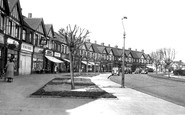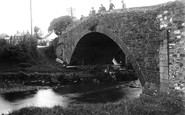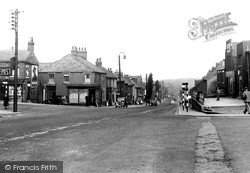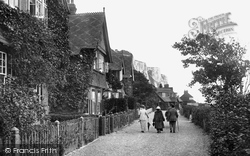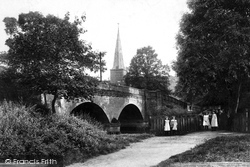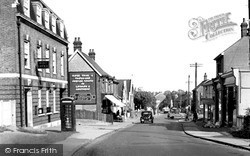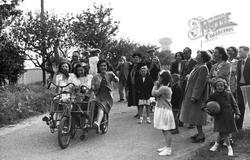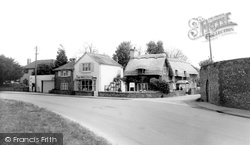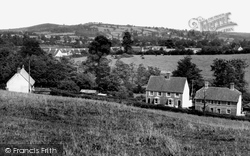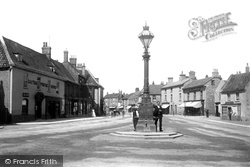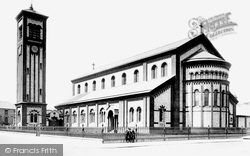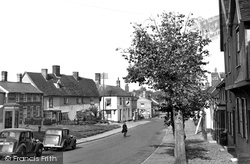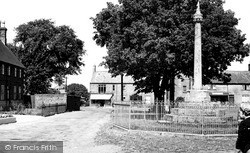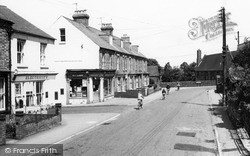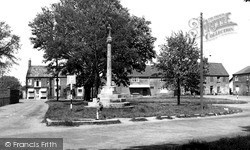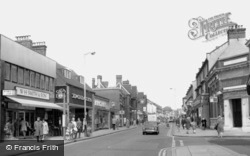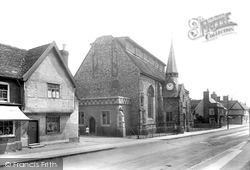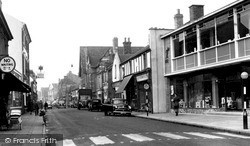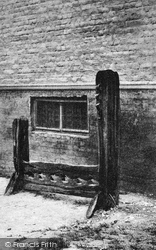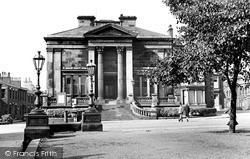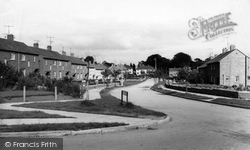Places
Sorry, no places were found that related to your search.
Photos
Sorry, no photos were found that related to your search.
Maps
Sorry, no maps were found that related to your search.
Books
Sorry, no books were found that related to your search.
Memories
655 memories found. Showing results 121 to 130.
The Salford Girl
I was born in 1947 and lived at 52 West St, Lower Broughton, Salford 7. I attended St. John's School for girls, just off Chapel St. My parents were Annie and David Johnson. I had an older sister, Jean, and a younger brother, David. My ...Read more
A memory of Salford by
The Roxy
Saturday mornings at The Roxy, Barkerend Road, Bradford were a magical event in the lives of 8 year olds plus in the 1950's. The film breaking down which it did every week to the sounds of a hundred kids stamping and yelling and ...Read more
A memory of Bradford in 1953 by
The Red Lion Pub And The 221 Bus.
Before I moved to The Ridgeway in 1955 I live in Woodall Drive and regularly used the 221 bus to trundle up Paines Lane past my school, and ending up in the space outside the RedLion pub. I remember how the bus rocked ...Read more
A memory of Pinner by
The Rec!
Ah yes, The Rec! Scene of many a battle and many a cup final, in later years there was romance! You could get through the hedge and down onto the railway line to put halfpennies on the line that got flattened by trains as they ran ...Read more
A memory of Little Sutton by
The Port Inn Brimscombe
I first knew Brimscombe in the 1950s. I was brought up between Toadsmoor and Middle Lypiatt. In this starkly isolated location, it took a devoted beer drinker to travel through the darkness to the nearest pub. My Dad was ...Read more
A memory of Brimscombe by
The Oval.
We lived on the corner of the oval adjoining Burnt Oak Road in a flat, 53b, above what was at the time an empty shop. It was wartime and we used to ride our bikes around the empty shop. Out the back was a garden and there was an iron fire ...Read more
A memory of Sidcup in 1942 by
The Ostels, Brynmenyn
I am Philip Hopkins, born 1952 and moved the Ostels when I was 6 months old and lived there till I was 10. We lived in the posh part of the Ostels (brick built), I think the hostel had two bedrooms and was in a place called ...Read more
A memory of Abergarw in 1958 by
The Oriel, Racecourse And The Later 60 S
The racecourse was pretty much my home all my life, Kempton Avenue. Sorry, a bit of a personal ramble here mixed with my remeniscing about me to put into context; I was born in Ealing in 53 of Welsh family (5 older ...Read more
A memory of Northolt by
The Only Sassenach In The Town.
After the blitz in London, my mum rang her uncle in Newton Stewart. As a result of that call, we spent several months living in Newton Stewart. The uncle owned the 'K' shoe shop in (I think) Victoria Road. His ...Read more
A memory of Penninghame Ho in 1940 by
The Nursery
I was born in 4 The Nursery in 1944. My gran Elizabeth Bayles, my mother Emma Bayles. I went to Millbank School at age 4yrs. I can remember my first teacher there Miss Watkins. My Mother worked at Lockeys buses as a bus ...Read more
A memory of West Auckland in 1953 by
Captions
405 captions found. Showing results 289 to 312.
The village flourmill was powered by two overshot waterwheels. The mill is pictured when it was still in working order.
The main A177 road south from Shincliffe leads to Coxhoe; it may follow the course of an old Roman road.
This is the landscape northwards from the limekilns and quarries north of Wych to the Main Street at Bothenhampton (left to right).
The windows of the grand red brick and tiled houses are wide open, which suggests that a welcome cool breeze is coming in off the sea. The chalk cliffs are part of the White Cliffs of Dover.
Looking south across the River Wey, with a group of children posing for the photographer in front of the wooden Boarden Bridge, the centuries-old crossing point.
The sign in the foreground points to the Army's Central Ammunitions Depot in Bramley Road, which eventually shut in the 1970s.
The Post Office building is solidly built of brick.
For many working people, life after the war was grey and utilitarian. Holiday camps like Caister's offered inexpensive breaks for the whole family, with everything included in the cost.
An isolated village of flint and brick cottages, to the west of Chichester. In the village are Adsdean, a gabled Tudor style house of around 1850, and the church of St Mary, built in 1859.
We are looking north- eastwards from one of the public footpaths across Tarks Hill over Mill Lane and Brister End (centre) to the twin peaks of Honeycombe Wood (top left) and Lillington Hill
The Old House (left) dates from 1678, and it is a prominently sited example of English domestic architecture at its very best.
On the left is a fine Victorian shop- front imposed on a plain brick house. The town is renowned for its public school, Gresham's, founded in 1555 by John Gresham, Lord Mayor of London.
Romanesque Italy arrived in Susans Road, Eastbourne, with this remarkable church in yellow and red brick and terracotta funded by a great-niece of the Duke of Wellington, Lady Victoria Wellesley, and
On the right are Rayner's, an electrical shop, and Thomas the ironmonger. To the right, the long building is the former 15th-century Guildhall.
The Buttercross is to be found in the centre of the village market place. The railings have gone, as have the brick wall and the trees behind it.
Church Street and the roads off to the left are part of a grid of Victorian brick, terraced, straight streets.
The roughly rectangular Market Place (or village green) with its medieval cross is surrounded by attractive houses with shops on the east side.
This new viaduct across the Tamar has just been opened, linking Plymouth to the district around Gunnislake and Callington.
High Street North is a relatively undistinguished and typical London suburban shopping street: the exuberance of the Town Hall complex is forgotten.
Needham, on the main road, was in ancient times a hamlet of Barking, but only became a parish in 1901.
At the Stamford Road end of the street, the newly-built showroom of Tutty's sold kitchen units and appliances. Newman's next door was an old-fashioned ironmongers, which has resisted change.
A four-hour period in the stocks was the usual reward for misdemeanours such as blasphemy, drunkenness, vagrancy or breaking the Sabbath.
The Institute for the Diffusion of Useful Knowledge has stood up well to the passing of time.
Looking down New Street to the Moot Hall, we can see on the right a brick Georgian house where many BBC trainees lodged in the 1960s.
Places (0)
Photos (0)
Memories (655)
Books (0)
Maps (0)

